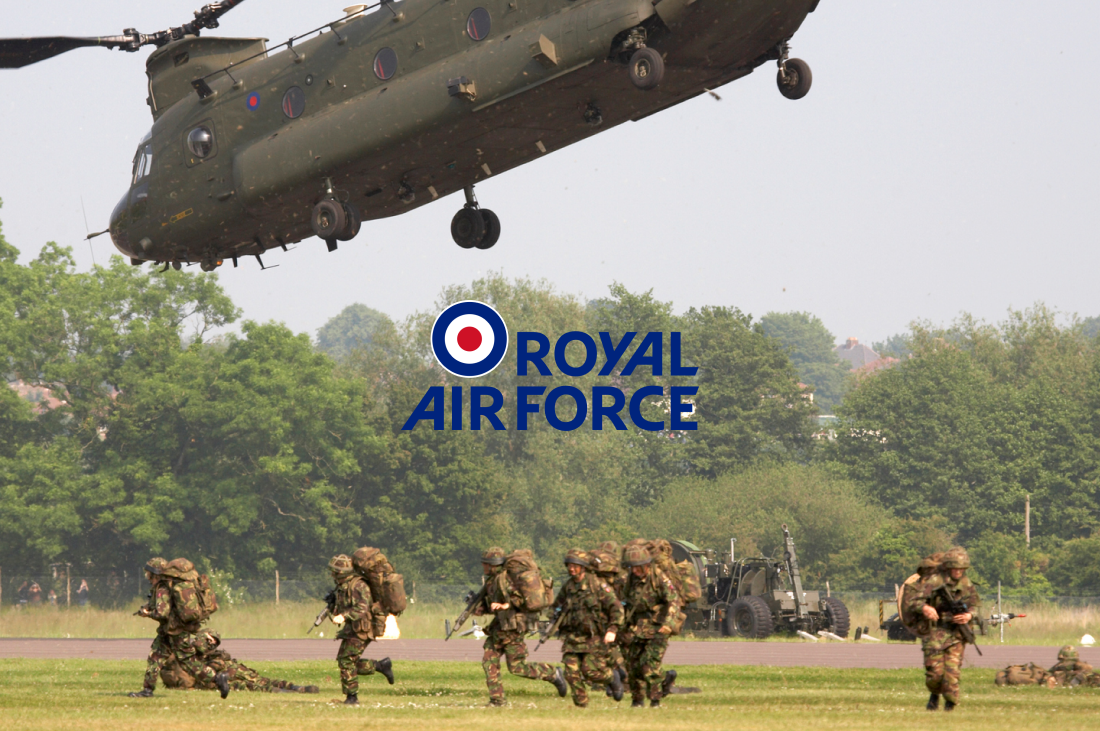The RAF Regiment is a specialist corps founded by Royal Warrant in 1942. Its principal purpose is to counter threats across a wide spectrum, wherever and whenever necessary. The RAF Regiment also prepares non-Force Protection specialists for the rigours of operations. The RAF Regiment is essentially the ground force for the RAF as a whole, with an incredible heritage.
Our Brief
The RAF Regiment needed to excite people about getting engaged with the regiment and actually enlisting – as well as engaging future recruits, serving members, and veterans. There were groups of people that perhaps would have thought about the RAF but not the Regiment, people that were already in the RAF who a community could be built around, and people that were a good fit for the Regiment but weren’t aware of the possibilities the Regiment offered. Our job was to create a product strategy that engages, educates and inspires past, present, and future generations of the Regiment. We were also called upon to facilitate the discovery phase with the Regiment to work out how they could maximise their potential and solve their problems to make them relevant.
How we solved the problem
- Initially, we were asked to conduct the discovery phase, but in reality, it was strategy setting. We facilitated a number of different workshops with the Regiment to understand the user journey, organisational and user needs, product, audience, business objectives and their vision. We also interviewed current servicemen and women, veterans, and potential recruits to understand how they felt about the current perception of the Regiment. This involved a visit to the Regiment on multiple occasions to research, interview, and analyse the needs of the Regiment and its product. This then informed our next steps.
- We then began to facilitate the product strategy process with the Regiment so that we could build a business case, a roadmap, and set the strategy for the future. The process involved collaborative workshops, gathering insights, iterating on concepts, and really getting under the hood of the Regiment to understand the how, why, and future of its product. We also took time to focus on persona setting, scenario mapping, vision and scene setting, and prioritisation, along with regular review points, so we knew we were still on course for success.
- At the heart of solving the problem the Regiment had was a clear strategy to execute the discovery phase we had been through, which was tested and spoke to business needs. We were also able to make critical recommendations on where the RAF could invest in bringing the strategy to life, which formed the business case. Ultimately, the project was about ROI and making the most of the product they had – which was a heritage-laden institution.
Outcomes and solutions
After facilitating the product strategy, technical strategy, business case, and roadmapping exercises, we were able to set some solid product strategy foundations, create new personas for the Regiment to target, build an ROI strategy, a product roadmap, tech stack solutions, and high-level stories.
This enabled the Regiment to capitalise on the investment they were going to make in their product and heritage. All this was wrapped up neatly in a discovery report that the RAF could execute and capitalise on based on the critical business recommendations made.

